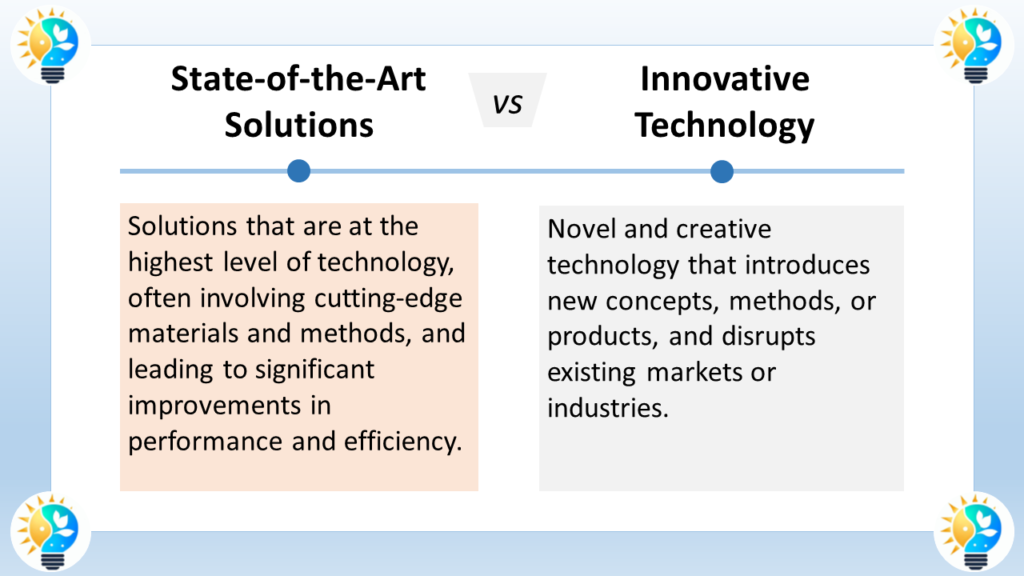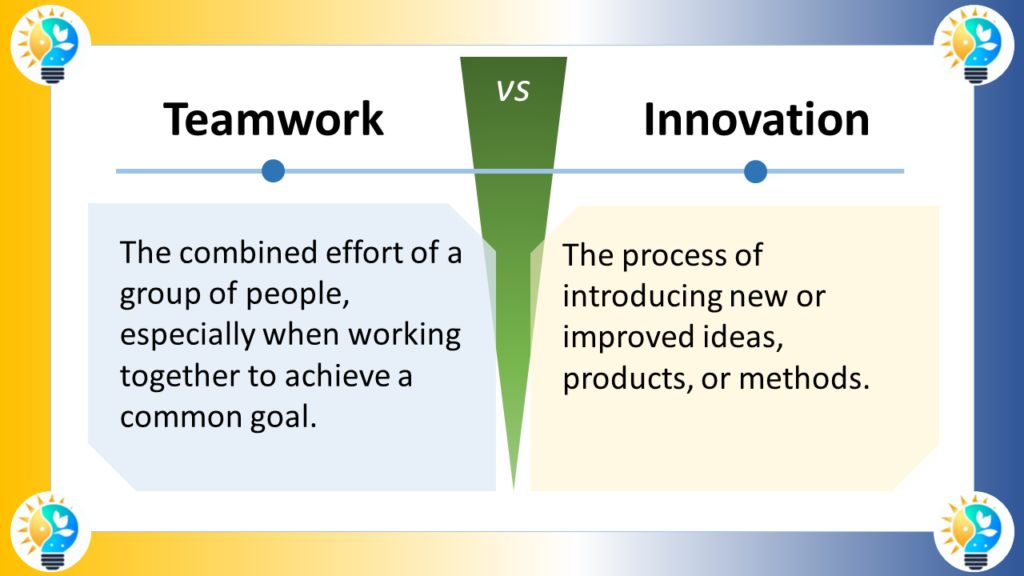State-of-the-art solutions and innovative technology both signify top-tier advancements, but while state-of-the-art solutions leverage cutting-edge materials and methods, innovative technology actively introduces new concepts or products to drive progress.

The terminology surrounding technology often includes phrases like Innovative Technology and State-of-the-Art Solutions, each signifying a level of advancement and sophistication in technological development.
Definition
Defining Innovative Technology
Innovative Technology implies a fresh approach or improvement that introduces functionality or performance enhancements. It doesn’t necessarily have to be the best available solution at the moment but must represent a significant step forward from previous methods or tools.
Characteristics of Innovative Technology
- Creativity: Resulting from a creative or unique approach to problem-solving.
- Progress: Providing advancement beyond the current standard.
- Adaptability: Capable of being adopted and implemented within various frameworks.
Defining State-of-the-Art Solutions
State-of-the-Art Solutions, on the other hand, represent the highest level of development achieved at a particular time. This term is synonymous with cutting-edge or leading-edge technology that is considered the best available.
Characteristics of State-of-the-Art Solutions
- Excellence: Denotes the pinnacle of current technological development.
- Benchmark: Serves as the standard against which new technologies are measured.
- Current: Reflects the most contemporary and advanced implementation in its field.
Exploring a Variety of Synonyms for Innovative Technology
- Advanced Technology
- Cutting-Edge Innovations
- Cutting-Edge Breakthroughs
- Disruptive Tech
- Emerging Technologies
- Forward-Looking Tech
- Futuristic Innovations
- Groundbreaking Developments
- High-Tech Breakthroughs
- Innovative Breakthroughs
- Inventive Solutions
- Leading-Edge Advancements
- Modern Technological Breakthroughs
- Progressive Advancements
- Next-Generation Technology
- Novel Tech
- Revolutionary Tech
- State-of-the-Art Solutions
- State-of-the-Art Innovations
- Trailblazing Innovations
- Visionary Tech

Innovation is considered as a driving force in progress.
It includes the introduction of novel ideas, methods, or products that bring positive change and advancement.
For more information about innovations, check our glossary
Innovative Technology vs. State-of-the-Art Solutions: Relationship and Relevance
While Innovative Technology may lead to the creation of state-of-the-art solutions, the two are not interchangeable. Innovative Technology is focused on the novelty and the advancement process, whereas State-of-the-Art Solutions are about reaching the peak of current technological capabilities.
Contextual Use of the Terms
Organizations might deploy Innovative Technology to address specific issues or to gain a competitive edge through new features or services. Meanwhile, they might adopt State-of-the-Art Solutions to ensure they are utilizing the best available technology for optimal performance and efficiency.
Examples of Utilization
The use of artificial intelligence (AI) for personalized recommendations in e-commerce can be seen as an Innovative Technology, as it improves the shopping experience by suggesting products based on consumer behavior.
In contrast, quantum computing, as of the latest developments, could be considered a State-of-the-Art Solution for certain types of computation, offering unprecedented speed and efficiency compared to classical computing.
Comparison Innovative technology vs state-of-the-art solutions
Innovative technology and state-of-the-art solutions are related concepts but have distinct differences. Let’s explore each term and understand their disparities.
- Innovative Technology:
Innovative technology refers to the development and implementation of new and creative ideas, methods, or products that bring about advancements and improvements in various fields. It involves the introduction of novel approaches, techniques, or technologies that push the boundaries of what is currently available or commonly used. Innovative technology often aims to solve existing problems or meet emerging needs in a more efficient, effective, or sustainable way.
Examples of innovative technology include:
- Breakthroughs in artificial intelligence (AI) and machine learning [1]
- Cutting-edge robotics and automation systems [1]
- Advancements in quantum computing [1]
- Emerging augmented and virtual reality (AR/VR) technologies [1]
- Revolutionary nanotechnology applications [1]
- Development of advanced materials like graphene and carbon nanotubes [1]
- Next-generation wireless networks such as 5G [1]
- Advancements in energy storage technologies like lithium-ion batteries [1]
- State-of-the-Art Solutions:
State-of-the-art solutions, on the other hand, refer to the current best available solutions or technologies in a particular field or industry. These solutions represent the highest level of advancement and are considered the most advanced and effective at a given time. State-of-the-art solutions are typically the result of continuous research, development, and innovation, and they set the benchmark for excellence in a specific domain.
Examples of state-of-the-art solutions include:
- The latest smartphones and computers [1]
- High-speed trains like the Japanese Shinkansen [1]
- Next-generation aircraft such as the Boeing 787 [1]
- Cutting-edge medical equipment like MRI machines [1]
- Advanced renewable energy technologies like wind turbines and solar panels [1]
- State-of-the-art military technologies like stealth aircraft and unmanned drones [1]
In summary, innovative technology refers to the introduction of new and creative ideas or technologies, while state-of-the-art solutions represent the current best available solutions in a specific field or industry.
Sources:
- Advanced Technology vs. State-of-the-Art Technology: What’s the Difference?
- What is State-of-the-Art Solutions? | 3 Answers from Research papers
- The Art Of Innovation: How Scientific Research And The Arts Can Collaborate To Generate Innovations
FAQ
Q: Can a solution be both innovative and state-of-the-art?
A: Yes, a solution can be both if it introduces a novel approach while also being the most advanced implementation available.
Q: How long does a solution remain state-of-the-art?
A: A State-of-the-Art Solution remains as such until a newer, more advanced development supersedes it, which can vary based on the pace of innovation in the field.
Q: Do companies need to always strive for state-of-the-art solutions?
A: Companies should consider state-of-the-art solutions when they align with strategic goals, but they must also weigh factors such as cost, integration complexity, and actual needs.
Q: Is innovative technology more affordable than state-of-the-art solutions?
A: Not necessarily, as Innovative Technology can be expensive due to research and development costs. However, State-of-the-Art Solutions often carry a premium due to their top-tier status.
Q: How do consumers benefit from state-of-the-art solutions?
A: Consumers benefit from State-of-the-Art Solutions through enhanced experiences, improved performance, and access to the latest advancements in technology.


